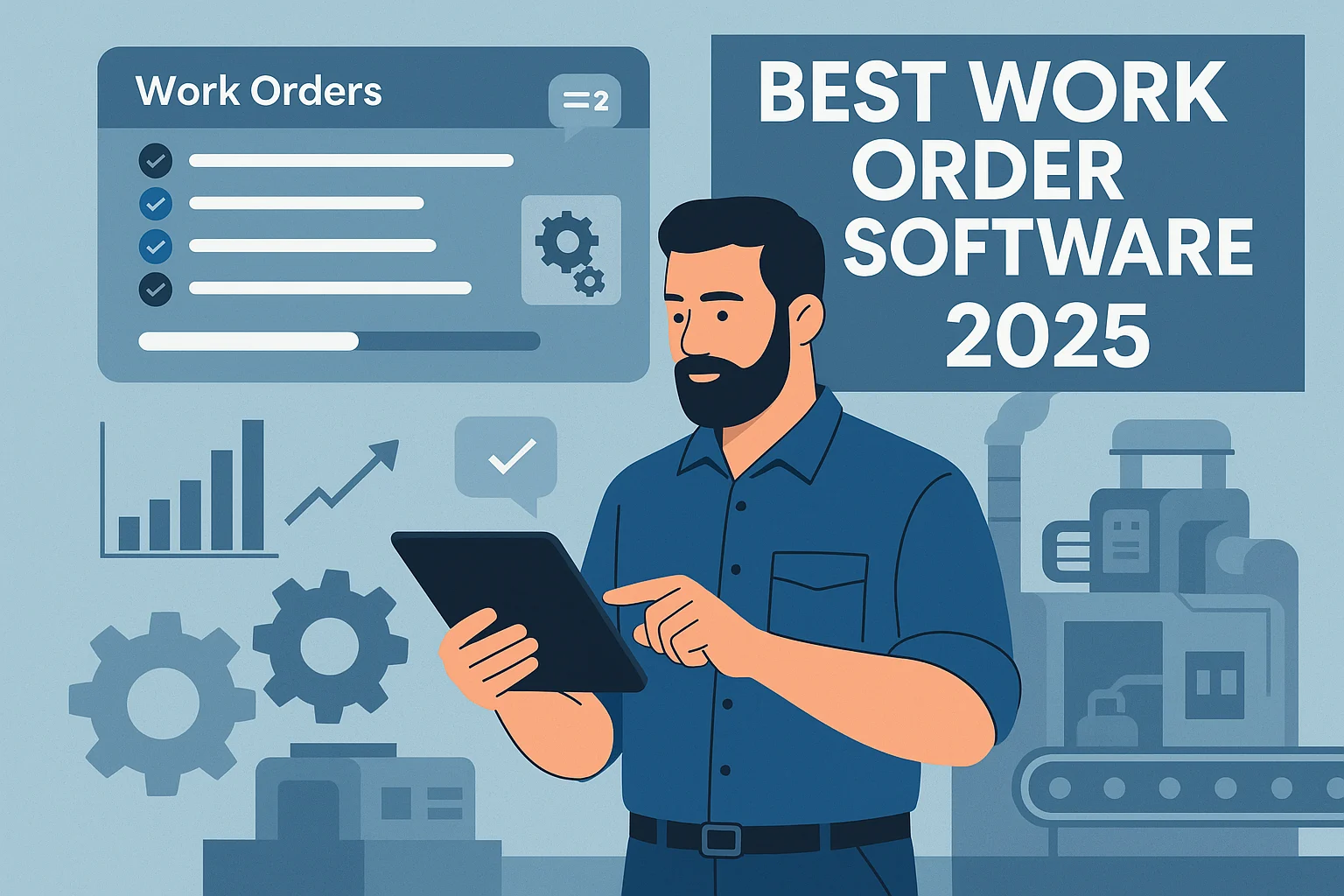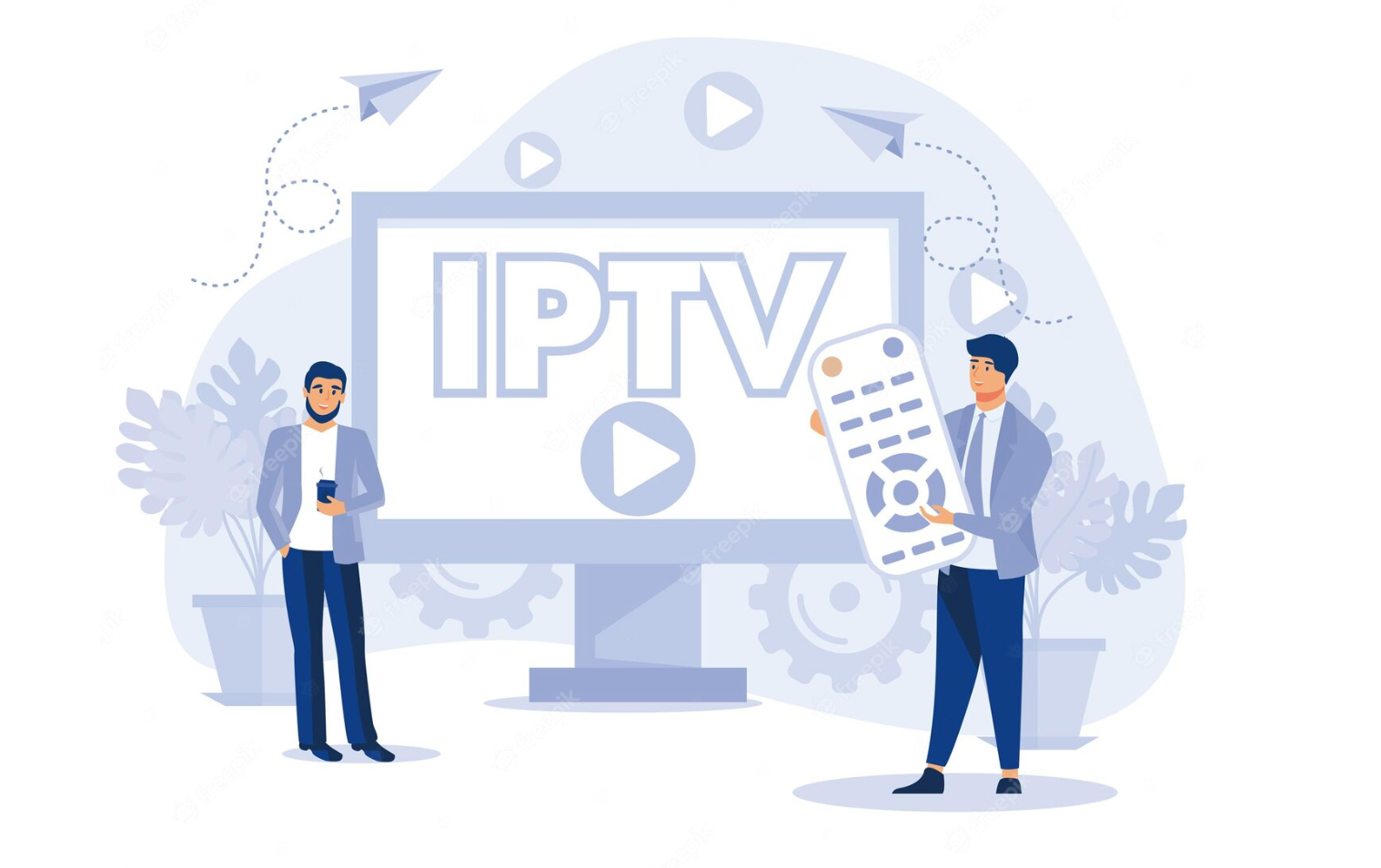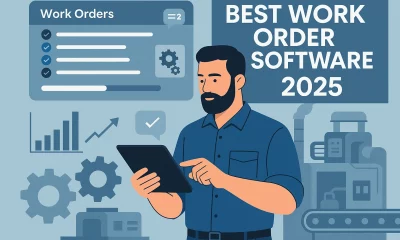Business
9 Top Benefits of a Managed Services Provider (MSP)

A customer’s end-user systems and information technology (IT) infrastructure are remotely managed by a managed service provider, a third-party business. Customer organizations can pay attention to working on their services as most MSPs handle the data management department.
Application Service Providers (ASPs), which provided a service level for remote application hosting, first appeared in the 1990s, marking the beginning of the evolution of MSPs. When a provider’s service is offered over the internet and is backed by an SLA, the phrases managed service provider and cloud service provider are frequently used interchangeably.
Types Of Managed Service Providers
Managed Service Providers specialize in various segments like data storage, legal services, financial services, etc. There is a vast spectrum on which one can distinguish MSPs.
Applying MSPs according to customer size can be as follows:
- Pure-Play MSPs focus mainly on alerts and reporting as they are smaller providers.
- Staffing Legacy MSPs target mid-level companies offering monitoring, reporting, software upgrades, and installation services.
- High-Level MSPs allow unlimited outsourcing of their IT systems to offer services at a vast range.
On the kind of services offered, MSPs are divided into the following categories
- MSPs deliver real-time monitoring for operators, network services, and so on.
- MSPs support remote devices, provide cloud-based software, and fix technical issues.
- To remain ahead of issues, MSPs offer proactive support to maintain devices.
- Some MSPs even offer scheduled network maintenance.
- MSPs can work through invoices and payments through a billing system which simplifies billing.
Usage of MSPs
MSPs can lessen the burden of companies regarding technical know-how and much more. Smaller businesses can obtain IT expertise, and bigger firms can supplement existing IT staff. MSPs handle IT infrastructure management, provide technical assistance, add cybersecurity, manage access to accounts of users, offer payroll services, and a few more.
Working of MSPs
MSPs and organizations start with assessing information that provides ways to assist business goals and the scope of improvements. MSP may deliver various services based on the company’s setup.
MSPs that give technical support charge for the time invested in removing different errors and fixing issues. Other MSPs that assist in the subscription service model bill the customers monthly. MSPs services are described through SLA that notes down the organization’s expectations. This is a service agreement.
MSPs may offer their in-house services, those of third suppliers, or a combination of the two. MSPs emphasize using specialized software programs that perform autonomous management of tasks like RMM.
An SLA might be connected to the costing structure of an MSP. A customer may choose from various SLAs that an MSP offers, paying more under a tiered price system for higher service levels.
Benefits of Managed Service Providers

Many in-house IT teams lack in keeping themselves up-to-date with the latest trends and cannot provide effectively to the business companies they work for; therefore, working with MSPs can bring many advantages, as follows:
- MSPs adopt proactive approaches. For instance, they conduct root cause analysis so the same issue does not arise again. Doing this avoids downtime and maximizes uptime.
- MSPs have knowledgeable individuals who fix current issues and improve business processes. It helps in staying ahead in competition from others and gaining expert advice.
- MSP can offer more and better cybersecurity as they have key software designed and targets breaches before itself.
- MSPs save in-house teams time as they can access new technology and advice on which software to invest in for optimum utilization.
- MSPs act as a single point of contact for any business needs, whether your Service Delivery Manager is available.
- They are cost-efficient because they require no training, have more predictable costs, and can manage systems, and the operating expense model is used.
- Maps offer round-the-clock services, monitor systems, and resolve issues any time of the day with expertise and ease.
- MSP offers greater flexibility and scalability in terms of giving time to in-house staff to focus on larger projects and implement change and innovations.
- These service providers reduce risk and manage complexities of compliance and auditing by saving the company from any regulation violation.
Therefore, an MSP can be a great asset to any company if used efficiently, as technologies keep evolving and everyone requires technology for progress. However, only some companies have the right people or can spend on new recruitment. So, here is where Managed Service Providers come to the rescue, solve this ever-changing technology issue, and move the company toward growth.
Challenges Faced by MSPs

Despite the experience, Managed Service Providers can also face difficulties we shall see now.
- Many MSPs need to concentrate on security
- Reliance on MSP can cause system downtime for the company if the MSP cannot comply with the SLA.
- MSP can be time taking in replying to a problem or query.
- An MSP can try to upsell a company on products or services it doesn’t require.
- If an MSP manages and monitors its infrastructure through a proprietary tool, the information contained therein could not be publicly available.
- With Cyber attacks on the rise, MSPs need to up their game, prevent themselves from cyber risks, and manage such risks proactively.
- MSPs can face communication issues and must provide adequate to the companies, which becomes a problem in retaining customers.
- Adopting a good automation tool is essential for businesses to ensure productivity, time-saving, and border outlook.
Who Needs Managed Service Providers
Many industries, as follows, could grow with the help of MSPs, like automotive dealers, as they would only be able to function effectively with an MSP.
- Healthcare
- Industrial & Manufacturing
- Country Clubs
- Small & Medium-Sized Businesses
- Skilled Trades Sector
How to Select the Right MSP?

With almost all companies outsourcing their IT needs to managed service providers, choosing a well-managed service provider is essential. Therefore, clients should thoroughly investigate the provider before agreeing to a managed service agreement.
The following tips would help one choose the right MSP.
- MSPs need an amazing skill set beyond IT management services and expertise in various fields.
- A successful MSP adopts a proactive strategy that empowers clients to prevent failure and continuously improve. Additionally, learn if the external service provider makes use of cutting-edge technologies.
- Determine if the MSP has the minimum experience to manage multi-vendor, multi-cloud, and hybrid settings.
- Your company may develop and prosper in today’s competitive market with the aid of an MSP with worldwide capabilities and reach.
- Make sure your MSP is prepared to abide by performance-based service-level agreements.
- The MSP you choose should be able to offer a comprehensive portfolio and give you options from no vendor lock-in to pay-as-you-go pricing models.
Conclusion
The fact that the digital world is changing makes it challenging for businesses to keep up. Engaging an MSP will accelerate your learning curve and speed to value while enabling you to ride on the coattails of emerging technology.
Managed service providers make a company resilient and cost-effective and evolve business practices.
Managed service providers vary as they can offer security-related help, data storage, clouding techniques, and much more. Such expertise makes them more feasible and easy to hire even though they are a third-party operator.

Apps and Software
Best Work Order Software for Maintenance Efficiency

In present fast-moving industrial and facility environments, maintenance teams can no longer rely on paper-based systems or manual tracking. Work order software has become an essential tool in 2025, enabling businesses to streamline operations, reduce downtime, and optimize asset performance with ease. These digital platforms automate the creation, assignment, and tracking of maintenance tasks—saving time, minimizing errors, and boosting accountability.
With the rise of mobile-first solutions, IoT integrations, and AI-driven scheduling, work order software is now central to achieving maintenance efficiency across manufacturing plants, commercial buildings, utilities, and service sectors. In this guide, we review the 10 best work order software platforms that are redefining maintenance management in 2025.
What Is Work Order Software?
Work order software is a centralized digital platform used to generate, assign, and track maintenance tasks across facilities, equipment, or assets. It simplifies workflows by automating job requests, scheduling preventive maintenance, and maintaining a detailed log of repairs and service history. As of 2025, over 68% of maintenance teams worldwide have adopted work order systems to replace outdated paper-based or spreadsheet tracking methods (Source: Statista Maintenance Tech Trends 2025).
These platforms now feature cloud-based access, mobile integration, AI-driven task prioritization, and IoT connectivity, enabling real-time updates and predictive maintenance. Industries like manufacturing, healthcare, logistics, and utilities rely on this software to cut unplanned downtime by up to 30% and improve asset lifecycle management.
Why Using Of Work Order Software Matter?
1. Reduces Equipment Downtime
Work order software minimizes unplanned equipment failures by enabling timely repairs and preventive maintenance. In 2025, businesses report up to a 40% reduction in downtime, which boosts production output, lowers emergency repair costs, and enhances overall operational efficiency across manufacturing, logistics, and facility management sectors.
2. Improves Preventive Maintenance Compliance
Automated scheduling through work order software ensures preventive maintenance tasks are performed consistently. This results in a 25% improvement in compliance rates and extends asset lifespan, helping organizations avoid reactive repairs, reduce equipment stress, and better adhere to manufacturer service intervals and safety inspection timelines.
3. Centralizes Maintenance Records
Work order software creates a centralized digital repository for maintenance history, parts usage, technician performance, and cost tracking. These records are invaluable for audits, warranty claims, and root cause analysis. It helps teams maintain transparency, regulatory compliance, and better decision-making through accessible and organized maintenance data.
4. Enhances Workforce Accountability
Digital work order assignment allows managers to track technician activity, job status, and time to completion. This improves workforce accountability by identifying inefficiencies and rewarding productivity. Teams work more cohesively with clear expectations, reducing miscommunication and ensuring no maintenance task is overlooked or delayed.
5. Supports Data-Driven Decision Making
Modern work order platforms feature built-in analytics and reporting tools. These insights help managers monitor KPIs, detect recurring issues, and optimize labor and material usage. In 2025, data-driven maintenance strategies can reduce annual maintenance costs by up to 20% across asset-heavy industries like manufacturing and energy.
5 Best Work Order Software in 2025
1. UpKeep
UpKeep is a top-rated, mobile-first work order software designed to streamline maintenance operations and asset management. Trusted by over 4,000+ companies worldwide, it’s known for ease of use, robust mobile access, and fast implementation. In 2025, UpKeep reports that teams using its platform see a 30% increase in technician productivity and 26% fewer equipment failures due to proactive task scheduling.
It supports cloud-based deployment, offline functionality, and integrates with QuickBooks, Slack, and Zapier, making it a go-to for maintenance teams in facilities, manufacturing, and property management sectors.
Key Features:
- Mobile-First Work Order Management: Create, assign, and close work orders from smartphones with real-time updates and offline capabilities for field-based teams.
- Preventive Maintenance Scheduling: Automate recurring tasks with customizable PM templates, reducing reactive maintenance and improving asset reliability over time.
- Asset Management & History Tracking: Link work orders to equipment, track repair logs, and monitor asset lifecycle to support smarter maintenance decisions.
- Inventory & Spare Parts Tracking: Manage inventory levels, receive low stock alerts, and streamline reordering directly from the platform to avoid stockouts.
- In-App Messaging & Collaboration: Communicate directly within work orders to reduce miscommunication and speed up response times across teams and supervisors.
- Analytics & Maintenance Reporting: Gain visibility into key KPIs like mean time to repair (MTTR), technician productivity, and asset performance through interactive dashboards.
Free Plans Include:
- Access for 1 user only
- Unlimited work orders
- Basic asset and location tracking
- Limited reporting and no integrations
- Available on mobile and desktop
Potential Drawback
UpKeep’s lower-tier plans have limited reporting, user restrictions, and no API access, which may not suit larger or highly regulated operations.
Industries Using UpKeep:
- Manufacturing
- Property Management
- Facilities & Building Maintenance
- Hospitality
- Healthcare & Hospitals
- Education Institutions
- Warehousing & Logistics
Best Suited For
UpKeep is best for small to mid-sized teams that need a fast, mobile, and affordable solution to digitize work orders and preventive maintenance. Ideal for businesses with field technicians or distributed assets seeking to boost efficiency with minimal training.
2. Fiix by Rockwell Automation
Fiix is an AI-powered, cloud-based work order and CMMS platform built by Rockwell Automation. Designed for industrial-scale asset management, it simplifies maintenance workflows through smart scheduling, ERP/IoT integrations, and predictive analytics. In 2025, companies using Fiix have seen a 32% decrease in equipment failures and 25% faster task resolution.
Its drag-and-drop calendar, custom dashboards, and mobile app make it a powerful tool for teams managing complex, multi-site maintenance. With open API connectivity, Fiix easily syncs with SAP, Oracle, and SCADA systems, helping enterprises move toward smarter, data-driven maintenance strategies across manufacturing, utilities, and energy sectors.
Key Features:
- AI-Powered Work Order Scheduling: Automates prioritization based on asset health, technician availability, and historical data for smarter maintenance planning.
- Mobile Maintenance Management: Technicians access work orders, checklists, and asset details on the go via the Fiix mobile app—even offline.
- Asset Performance Analytics: Advanced dashboards track equipment health, downtime patterns, and cost analysis to inform smarter capital planning.
- Integration with ERP & IoT Systems: Seamless integration with ERP, SCADA, and condition-monitoring tools enhances workflow automation and real-time alerts.
- Work Order Templates & Escalations: Pre-built templates and escalations streamline task creation and ensure compliance with SLAs or regulatory standards.
Free Plans Include:
- Limited to 3 users
- 25 active work orders/month
- Basic asset tracking & parts management
- Community support only
Potential Drawback
Slight learning curve for non-technical users, and higher-tier features like AI scheduling are available only in premium plans.
Industries Using Fiix:
- Manufacturing
- Food & Beverage
- Energy and Utilities
- Heavy Equipment
- Pharmaceuticals
Best Suited For
Fiix is best suited for large enterprises, manufacturers, utilities, and energy providers seeking predictive maintenance capabilities and full ERP/IoT integration. It’s ideal for businesses with complex compliance needs, large maintenance teams, and multiple facilities that need real-time insights and centralized management.
3. Limble CMMS
Limble CMMS is a cloud-based work order and maintenance platform known for its ease of use, rapid deployment, and strong mobile functionality. It enables preventive maintenance automation, asset tracking, technician performance monitoring, and custom KPI dashboards. As of 2025, businesses using Limble report a 34% increase in task completion speed and 27% drop in reactive maintenance costs.
With QR code integration, multilingual support, and unlimited custom fields, it’s highly adaptable across industries. Limble’s clean UI and responsive customer service make it a top pick for teams wanting a fast, scalable solution that improves visibility, uptime, and maintenance compliance.
Key Features:
- Automated Preventive Maintenance: Set schedules, assign recurring tasks, and reduce emergency breakdowns with flexible PM automation tools.
- Custom Dashboards & KPIs: Configure performance metrics, charts, and goals to match your team’s needs and benchmark asset reliability.
- QR Code-Based Asset Tracking: Scan asset tags to instantly pull up history, work orders, manuals, and parts—reducing search time by up to 40%.
- Multi-Language & Multi-Site Support: Ideal for global teams managing maintenance across multiple buildings and languages.
- Work Request Portal for Staff: Non-maintenance staff can submit and monitor requests without needing a full account or training.
Free Plans Include:
- Free 30-day trial only
- Full feature access during trial
- No long-term free plan
Potential Drawback
Higher-tier pricing may be prohibitive for small businesses; customization options may require onboarding help.
Industries Using Limble:
- Hospitality
- Education
- Healthcare
- Warehousing
- Government Facilities
Best Suited For
Limble is ideal for mid-sized organizations and facility teams in hospitality, education, healthcare, government, and warehousing sectors. It’s especially effective for businesses needing multi-location support, fast onboarding, mobile task management, and strong customer assistance without sacrificing customization or analytics.
4. MaintainX
MaintainX is a mobile-first work order and operations platform designed to simplify maintenance, inspections, and SOP execution. In 2025, it’s trusted by over 10,000 companies, helping them improve communication, compliance, and asset tracking. Teams using MaintainX report a 40% improvement in team coordination due to its built-in chat and real-time update features.
MaintainX supports unlimited work orders (even on free plans), offline mobile use, and document attachment (manuals, checklists, SOPs). It’s especially useful for field service operations, hospitality, retail chains, and multi-site facilities looking to digitize maintenance without overwhelming complexity.
Key Features:
- Unlimited Work Orders: Even on free plans, create and manage unlimited tasks for better responsiveness and operational agility.
- Mobile Chat within Work Orders: Communicate with technicians directly inside task threads—no more switching between apps.
- Digital SOPs & Checklists: Attach standard operating procedures, inspections, or safety protocols directly into work orders.
- Offline Mobile Mode: Field technicians can work without a connection, and changes sync once back online.
- Work History & Compliance Logs: Keep accurate records for audits, safety inspections, and maintenance trend analysis.
Free Plans Include:
- Unlimited work orders & assets
- Up to 5 users
- Access to mobile app, SOPs, and history
- Limited reporting and no integrations
Potential Drawback
Limited functionality in the desktop version; some advanced analytics only available in paid plans.
Industries Using MaintainX:
- Retail Chains
- Hospitality
- Logistics
- Utilities
- Commercial Cleaning
Best Suited For
MaintainX is best suited for retail operations, hospitality groups, logistics companies, and facilities with field-based or mobile teams. It excels in fast-paced environments where real-time communication, compliance checks, and mobile-first execution are critical. Perfect for companies that value simplicity, collaboration, and modern mobile UX.
5. eMaint CMMS by Fluke
eMaint is a robust enterprise-grade CMMS developed by Fluke, offering extensive customization, predictive analytics, and deep compliance features. In 2025, eMaint supports over 50,000 global users and enables a 15–20% reduction in total maintenance spend through its proactive, data-driven features. With multi-site scalability, condition monitoring, and detailed escalation workflows, it serves asset-heavy sectors needing high reliability.
The platform supports ISO compliance, integrates with SCADA and GIS, and provides powerful reporting tools for MTTR, MTTF, and downtime metrics. It’s a premier choice for operations requiring centralized control, advanced planning, and industry-grade safety and audit readiness.
Key Features:
- Condition-Based Maintenance: Triggers work orders from real-time asset data, reducing manual inspections and unplanned breakdowns.
- Multi-Site & Role-Based Access: Enables centralized control over decentralized operations with granular user permissions.
- Work Order Escalation Rules: Automatically escalate overdue or high-priority tasks to ensure quick resolution and accountability.
- Custom Reports & KPIs: Build dashboards to measure MTTR, MTTF, and maintenance backlog trends across teams or assets.
- Integrated Parts & Vendor Management: Streamline procurement workflows with supplier tracking and parts usage history linked to each work order.
Free Plans Include:
- Free demo only
- No long-term free tier
- Custom quote-based pricing
Potential Drawback
Complex to implement; may require extensive training and configuration for non-enterprise users.
Industries Using eMaint:
- Energy & Utilities
- Aviation
- Government Facilities
- Manufacturing
- Pharmaceuticals
Best Suited For
eMaint is best suited for large-scale enterprises, government agencies, aviation, pharmaceuticals, and energy sectors that demand high configurability, audit-compliance, advanced analytics, and integration with industrial systems. It’s ideal for organizations prioritizing long-term asset optimization, failure prediction, and enterprise-wide maintenance visibility.
Benefits of Using Work Order Software
1. Streamlined Maintenance Scheduling
Work order software automates recurring maintenance and task prioritization. In 2025, companies using automated scheduling report a 28% reduction in maintenance planning time. This ensures high-priority tasks are never missed, improving team coordination and minimizing costly unplanned downtime across operations.
2. Real-Time Task Tracking
With real-time dashboards and mobile notifications, managers can instantly view task status and technician activity. According to a 2025 CMMS user survey, real-time tracking improves job completion rates by 35%, enhancing accountability and reducing delays caused by communication gaps or unclear work assignments.
3. Asset Lifecycle Optimization
Digital work orders maintain detailed service logs for each asset, supporting better repair-or-replace decisions. In 2025, organizations leveraging this data-driven approach have extended asset life by up to 20%, according to industry benchmarks, reducing capital expenditure and boosting long-term maintenance ROI.
4. Enhanced Technician Productivity
Technicians equipped with mobile work order apps complete tasks faster due to instant access to instructions, manuals, and images. A 2025 field study shows that teams using mobile work order software improved task efficiency by 32%, reducing travel time, miscommunication, and tool downtime.
5. Improved Inventory Management
Integrated inventory tracking within work order software alerts teams when parts are low, enabling timely reordering. According to Gartner’s 2025 Supply Chain Tech Report, companies using real-time inventory features experience 24% fewer part shortages, helping to reduce repair delays and stock-related service interruptions.
Types of Work Order Software
1. Standalone Work Order Software
Standalone work order tools focus purely on digitizing task creation, assignment, and tracking without the complexity of a full CMMS. They are cost-effective, easy to deploy, and ideal for small businesses looking to move away from spreadsheets or paper logs.
In 2025, nearly 38% of small maintenance teams still rely on standalone systems for scheduling and real-time task updates. These tools typically offer mobile access, basic asset linking, and in-app communications. However, they may lack advanced inventory or analytics functions. Examples: UpKeep Basic, MaintainX Free. Best For: Small teams, retail stores, janitorial services
2. CMMS-Based Work Order Software
Computerized Maintenance Management Systems (CMMS) offer robust work order functionality integrated with asset management, preventive scheduling, spare parts inventory, and analytics. In 2025, over 62% of mid to large-scale facilities use CMMS-based platforms to reduce downtime, track KPIs like MTTR, and improve technician productivity.
These systems are scalable, configurable, and often used across manufacturing, education, and healthcare sectors. CMMS software also supports compliance, audit trails, and vendor tracking. Examples: Limble CMMS, eMaint, Hippo CMMS. Best For: Manufacturing, healthcare, warehouses, universities
3. ERP-Integrated Work Order Modules
These tools are embedded within or connect to Enterprise Resource Planning (ERP) systems, offering end-to-end visibility between maintenance, finance, procurement, and operations. In 2025, companies using ERP-integrated solutions report a 15–20% improvement in asset cost control due to linked budgeting and inventory modules.
Though complex to implement, these platforms enable unified workflows and cross-department insights. Common in large enterprises, they support service-level agreements, purchase order automation, and compliance reporting. Examples: SAP PM Module, Oracle NetSuite Maintenance, Infor EAM. Best For: Enterprises, logistics, automotive, oil & gas sectors
4. Mobile-First Work Order Apps
Mobile-first work order apps are built for technicians in the field, enabling them to create, update, and complete tasks via smartphones or tablets. In 2025, over 70% of technicians globally prefer mobile apps for real-time updates, photo attachments, and offline access.
These platforms increase technician efficiency, reduce paperwork, and improve task visibility. They’re often integrated with cloud platforms and include features like in-app messaging and SOP checklists. Examples: MaintainX, UpKeep, Fiix Mobile. Best For: Field service teams, property managers, hospitality, utilities
5. IoT-Integrated Smart Maintenance Platforms
These advanced systems generate work orders automatically based on real-time data from sensors, meters, or connected machines. IoT-integrated platforms support condition-based and predictive maintenance, reducing equipment failure by up to 40%, according to 2025 industrial studies.
They enable alerts when anomalies are detected, improve uptime, and extend asset life through precision monitoring. These solutions are typically used in smart factories or industries with high-value, continuous-use machinery. Examples: Fiix with IoT Hub, IBM Maximo Application Suite. Best For: Manufacturing 4.0, utilities, mining, energy sectors
How to Choose the Right Work Order Software
1. Assess Your Business Size and Complexity
Start by evaluating the scale and scope of your operations. Small teams may need basic tools for task tracking, while large enterprises require CMMS or ERP integrations. In 2025, over 60% of SMEs opt for mobile-first platforms, while enterprise users demand automation, asset hierarchies, and compliance management across multiple sites.
2. Check for Industry-Specific Features
Select software that offers features tailored to your sector. Manufacturing may require machine performance tracking, while healthcare needs compliance modules. Industry-aligned tools reduce customization time and increase efficiency. Many top platforms in 2025 provide templates and modules pre-configured for industries like logistics, education, facilities, and food & beverage manufacturing.
3. Evaluate Mobile and Offline Capabilities
A mobile-first platform is vital for technicians working in the field. Ensure the app works offline, syncs data automatically, and offers real-time updates. In 2025, 70% of maintenance teams rate mobile usability as a key factor. It boosts technician efficiency, reduces paperwork, and enhances visibility into remote or multi-site maintenance operations.
4. Ensure Integration with Existing Systems
Choose a system that integrates easily with your existing tools—ERP, HR, procurement, or inventory software. Platforms with APIs or plug-and-play connectors reduce manual data entry and support automation. In 2025, companies integrating work order software with business systems see up to 25% efficiency gains across maintenance, finance, and purchasing workflows.
5. Review User Interface and Training Needs
Ease of use is essential to maximize adoption. Opt for intuitive interfaces with clear navigation and drag-and-drop schedulers. Also, check if the vendor offers onboarding, tutorials, or live support. In 2025, systems like Limble and UpKeep report over 90% user adoption in the first month due to their user-friendly UI.
6. Check Reporting and KPI Tracking
Look for platforms that offer real-time dashboards and maintenance KPIs like MTTR, MTTF, and asset costs. Data-rich insights help optimize preventive maintenance and workforce performance. According to 2025 industry reports, organizations using KPI-driven dashboards reduce downtime by 20% and make more informed capital replacement decisions across equipment and assets.
7. Compare Pricing, Licensing, and Scalability
Understand the pricing model—per user, per asset, or per site. Make sure the platform scales as your team grows. Compare feature tiers, free trials, and long-term costs. Scalable systems with modular upgrades prevent costly migrations. In 2025, flexible pricing and future-ready scalability are top considerations for IT and operations leads.
Conclusion
Choosing the right work order software is essential for boosting maintenance efficiency, reducing downtime, and extending asset life in 2025. Whether you manage a small facility or a multi-site industrial operation, today’s top platforms offer scalable, mobile, and intelligent solutions tailored to your needs. By evaluating key features—like preventive scheduling, mobile access, asset tracking, and analytics—you can select software that not only streamlines operations but also empowers your maintenance team with real-time visibility and smarter decision-making. The right tool will not just manage tasks—it will transform how your organization handles maintenance from the ground up.
Business
Benefits of Switching to a Managed IT Service Provider Instead of DIY

Managed services have become the main source of support and assistance in various business enterprises. Nowadays, you don’t need to focus on your own internal processes of data management and integration. Some professionals can handle every complexity in your business prospects. It not only helps you to manage your business data in a better way but also allows you to expand your business on a global scale.
Many entrepreneurs still question the need for managed IT services for their businesses. They feel that the expertise and support of internal staff are more than enough for business expansions. However, they are the ones who face consistent problems while managing errors and protecting data on their system. Managed service providers will ensure your system is safe and secure from external attacks. Not only that, but they will also take care of your business prospects so that you can interact better with your clients and create a global identity.
What Are Managed Services In IT?
Managed IT services refer to hired programs and techniques by which you can develop your business with the right strategies. MSPs are expert professionals with the right knowledge about IT requirements in your business. Therefore you will not only be able to do away with all problems regarding data management but also develop your business on the right track. It is very important to opt for various managed services like data processing and error handling to improve your business with better interactions. Managed IT services will help you achieve your short-term goals and focus on business expansion on a large scale.
Advantages Of Using Managed Services For Your Business
To bring about overall development in your business, you need the right techniques and tools for improving your business aspects. Applying DIY methods with proficiency in every case regarding your business issues is impossible. Only managed IT service providers can help you eliminate your system’s consistent lags and bugs. As a result, the overall processing and management will develop like never before. Here are some of the crucial advantages of using managed services rather than taking care of your business single-handedly:
Experience
MSPs have great experience in data management and business development. They will help you utilize the right tools at the right time for a better online presence. Not only that, but you will also be able to improve traffic to your website and attract more clients as and when you start using export techniques of managed services.
Vulnerability Management
One of the prime benefits of using managed IT services is the idea of probable threats to your system. Internally you can develop your website and make amends when you discover abnormalities. On the other hand, professional MSPs will help you avoid the problem by securing your system right from the onset. So no such problem will occur shortly.
Improved Techniques
Managed IT services include advanced tools and techniques by which you can edit your data according to the latest trends. It will positively affect your business, making it even more attractive to prospective buyers. MSPs use modern techniques with the best strategies to bring out favorable results.
Security concerns
Managed service providers also carry out important security management programs on your system. It means that your system will be secure from external attacks and remain protected from internal checks and balances. Therefore you need not go through every little detail as and when notified about security concerns.
Developed business strategies
The strategies provided by MSPs are undoubtedly the best for your system. Moreover, they also create unique ways your business can develop online. It will mainly focus on your business patterns and create new beginnings. Improve the uniqueness of your website with the best strategic programs by managed services.
Outsourcing
One of the main ideas in online businesses is outsourcing. It is the only way by which you can reach out to more clients and expand your business online. However, sharing and transferring business data without proper security on your system becomes problematic. Managed services will help you achieve this aim in no time. MSPs will protect your system so you can easily interact with clients over shared platforms without fearing cyber crimes.
Scalability
You can easily improve your online presence with better interactions and unique business development methods. Crucial matters like SEO handling, content creation, and data integration play a vital role in business development. Managed services will provide unique strategies by which you can improve the scalability of your website and become more accessible.
Better interactions
Your communication with your clients and investors will improve with the help of authentic managed IT services online. It will provide the best possible outcomes because you can regularly interact without hiding your content. Features like two-factor authentication and data in visibility will help you share your content with people you trust, thereby creating a massive online presence.
Conclusion
Managed IT services have become the new-age developmental technique by which you can improve your business in a great way. The only thing you require is an efficient system on which the professionals can work daily. Once you start using the advanced Tools and techniques, you will understand the difference yourself. Moreover, online standard-managed IT services will help you work on your errors remotely. Make sure you choose the right services for your business and utilize the prospects with professional help from managed IT service providers.
Business
How to Start a Solar and Energy Business in The London

London is one of the largest cities in the world, and as such, it has a significant energy demand. With increasing concerns over climate change and the need for sustainable solutions, the solar and energy industry has grown rapidly in recent years. This blog will explore London’s solar and energy business and industry.
Solar and Energy Business Opportunities in London

London’s solar and energy industry is diverse, with various opportunities for businesses to capitalize on. Some of the business opportunities in the industry include:
1. Solar panel installation
London is a prime location for solar panel installation, with an average of 1,461 hours of sunshine annually. Businesses specializing in solar panel installation can provide clean energy solutions to homeowners, businesses, and local governments.
2. Energy storage systems
Energy storage systems are critical for ensuring a steady clean energy supply. Businesses specializing in energy storage solutions can help consumers optimize their energy usage and save money on electricity bills.
3. Smart home technologies
Smart home technologies, such as smart thermostats and lighting controls, can help consumers reduce their energy usage and save money on energy bills. Businesses specializing in smart home technologies can provide innovative solutions to meet the needs of consumers in London.
4. Electric vehicle charging infrastructure
With the UK government’s goal to phase out the sale of new petrol and diesel cars by 2030, the demand for electric vehicles is expected to increase significantly. Businesses specializing in electric vehicle charging infrastructure can provide consumers with convenient and accessible charging solutions.
Steps to start a Solar and Energy business in London

Starting a solar and energy business in London can be rewarding and lucrative, but it requires careful planning and execution. Here are the steps to follow to get your solar and energy business up and running in London.
1. Conduct market research
Before starting any business, it is essential to conduct market research to understand the demand for your products or services. Identify your target customers, their needs, and preferences, and evaluate the competition in the area. This will help you determine the viability of your business and develop a business plan. Market research is a critical step in starting a solar and energy business. It involves gathering and analyzing information about the market and the potential customers to determine the demand for your products and services.
2. Develop a business plan
A business plan is a roadmap that outlines your business goals, strategies, marketing plans, financial projections, and operations. It should also include information on your business’s legal structure, licenses, permits required, and funding options.
3. Choose a legal structure
Decide on the legal structure of your business, whether it is a sole proprietorship, partnership, limited liability company (LLC), or corporation. Each has advantages and disadvantages, so consult a legal professional to determine the best option for your business. Choosing the right business structure is important when starting a solar and energy business.
4. Register your Business
Register with the Companies House and obtain the necessary permits and licenses from the local government. This includes obtaining a business license, registering for VAT, and registering with HM Revenue and Customs. Register your business with Companies House, the UK government’s official registrar of companies. You can register your business online or by post, and you must provide details such as your business name, address, directors, and shareholders.
5. Secure funding
Determine your startup costs and secure funding to cover these expenses. This may include personal savings, loans, grants, or investments from family and friends. You can also use alternative financing options like crowdfunding or peer-to-peer lending.
6. Develop a marketing strategy
Develop a marketing strategy to promote your business and attract customers. This may include creating a website, and social media accounts, networking with industry professionals and attending trade shows.
7. Hire employees
Hire employees with the necessary skills and experience to run your business. This may include salespeople, installers, and administrative staff.
8. Source suppliers and equipment
Source suppliers and equipment necessary for your business operations. This may include solar panels, batteries, inverters, and other necessary equipment.
9. Launch your business
Launch your business by promoting your services and products to potential customers. Attend events, create marketing materials, and establish a presence in the community.
10. Continuously evaluate and improve your business
To ensure long-term success, assess and improve your business operations. This includes monitoring financial performance, customer satisfaction, and industry trends. Make adjustments to your business strategies as needed.
Conclusion
In conclusion, starting a solar and energy business in London can be rewarding and profitable. With the increasing demand for renewable energy solutions, there is a growing market for solar and energy services and products. However, starting a business requires careful planning, hard work, and dedication.
Once you launch your business, evaluating and improving your business operations is important. This includes monitoring financial performance, customer satisfaction, and industry trends. By making adjustments to your business strategies as needed, you can increase your chances of long-term success.
With a well-developed business plan and a commitment to excellence, you can start a solar and energy business in London that meets the growing demand for renewable energy solutions and helps build a sustainable future for our planet.
-

 Business3 years ago
Business3 years agoThe Most Efficient Ways To Use The Best 6 Business Keynote Presentations
-

 Apps and Software6 months ago
Apps and Software6 months agoStarbucks Partner Hours App Login Guide
-

 Entertainment6 months ago
Entertainment6 months ago15 Best IPTV Service Providers in the UK 2025
-

 Tech3 years ago
Tech3 years agoIs Forecasting A Part Of Data Science?
-

 Economy3 years ago
Economy3 years agoWhat does it mean to Dream About Pennies?
-

 Entertainment6 months ago
Entertainment6 months ago10 Best Free Video Player Apps For Apple TV
-

 Travel2 years ago
Travel2 years agoBenefits of UK Skilled Worker Visa for International Professionals
-

 Entertainment2 years ago
Entertainment2 years agoHow To Enhance Your Viewing with Video Subtitle Support

































